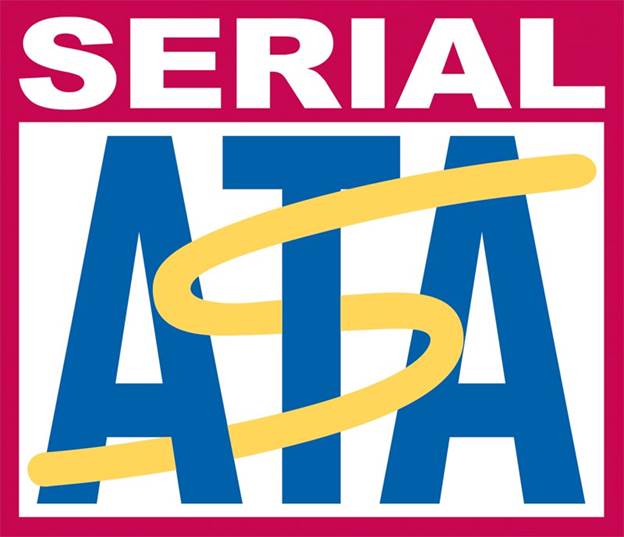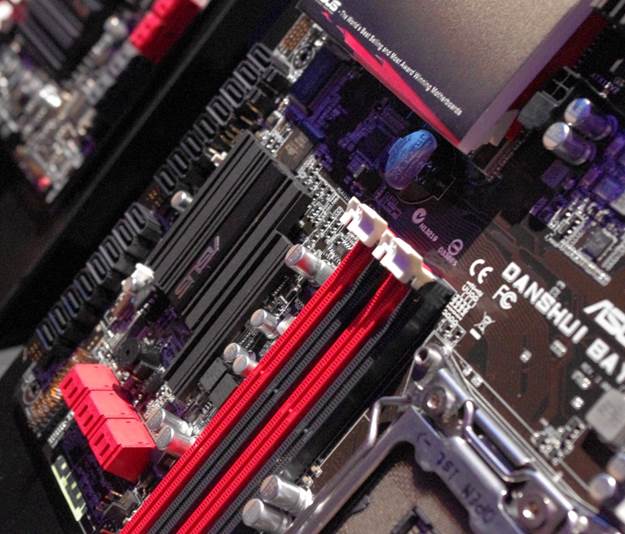Whenever components available at retail
begin to approach the theoretical bandwidth limits defined by the protocols
they use, you can bet a new standard or a faster revision of the current one is
on the verge of ratification by the appropriate industry associations. That’s
exactly the case with SATA.

SATA
is set for its next technological leap forward.
Today’s protocol revision, SATA III (or
SATA 3.x or SATA 6Gbps), has a real-world maximum data rate of around 600MBps.
As our longtime readers have surely noticed, we’ve tested numerous SSDs that
achieve nearly those speeds in reads, with write speeds not too far behind.
Even though SATA’s pipeline for SSDs is
just a few dozen megabytes per second away from becoming a bottleneck, the
industry organization behind the standard has already said that it doesn’t plan
to aggressively push for a 12Gbps SATA 4.0 revision (based on the existing
enterprise-grade Serial Attached SCSI interface) anytime in the foreseeable
future. According to the SATA-IO (Serial ATA International Organization), a
12Gbps SATA standard would require controllers that are an order of magnitude
more complex with significantly larger ICs, which would gobble up valuable
motherboard real estate and cost more to develop and manufacturer. Existing
cables wouldn’t be sufficient to handle the higher bandwidth, either, adding
another cost premium to SATA 4.0’s bottom line. All of the above would also
preclude it from quick adoption by AMD and Intel, the twin gatekeepers of PC
chipsets, deeming technologies worthy of inclusion or dooming them to perpetual
exclusion.

It’s
showing sixteen SATA 3 Gbps and six SATA 6 Gbps for a start,
as well as no significant power delivery and an obscene form factor.
Although the next stage in SATA’s evolution
is decidedly more incremental, SATA Express is almost here. Read on to learn
what makes the next SATA revision worth getting excited about.
SATA’s Transition
In 2003, the Serial ATA Workgroup (which
would later become SATA-IO) initially proposed the Parallel ATA replacement,
discarding the 80-pin interface plagued by crosstalk (remember those ribbon
cables?) in favor of a serial interface that consisted of two pairs of conductors
capable of passing data between two nodes, one bit at a time. The SATA
interface was able to blow past the PATA interface largely thanks to its
ability to run with a significantly faster clock. Narrower cables, smaller
connectors, and a dramatic increase in the number of devices you could connect
to the chipset were other factors that helped endear SATA to computing
enthusiasts.
Jumping ahead to 2009, SATA 3.0 is
finalized, and SSDs are still a fairly new innovation in personal computers. A
mere two years later, SandForce releases its SF-2200 family of controllers for
consumer SSDs. The SF-2200 controllers pushed flash-based storage performance
to up to around 80% of the standard’s maximum data rate.

LSI
Announces SandForce SF-2200 TCG Opal Compliance
Once hardware outpaces a standard, even if
that hardware is limited to the cutting edge of the market, it’s already too
late. Innovation halts, sales slump, and consumers and manufacturers begin
searching for something else; the standard is dead in the water. Although SSDs
still make up a small portion of the overall storage market, according to IHS
iSuppli, there were 57 million SSD shipments in 2013, and by 2017, that number
is expected to balloon to 190 million units. With SATA 4.0 clearly off the
table, there needs to be a performance incentive to help move that number of
units, and you might be surprised to learn that another standard, PCI Express,
is very likely to be behind the wheel for this next phase of SATA’s evolution.